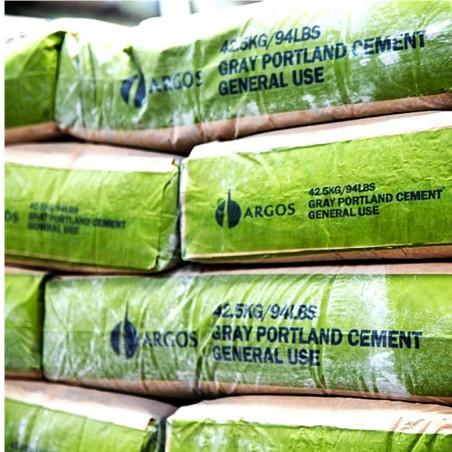- Out-of-Stock

Portland cement is the most common type of cement in general use around the world as a basic ingredient of concrete, mortar, stucco, and non-specialty grout. It was developed from other types of hydraulic lime in England in the early 19th century. It is a fine powder, produced by heating limestone and clay minerals in a kiln to form clinker, grinding the clinker, and adding 2 to 3 percent of gypsum. Several types of Portland cement are available. The most common, called ordinary Portland cement (OPC), is grey. Its name is derived from its resemblance to Portland stone which was quarried on the Isle of Portland in Dorset, England.
ASTM C150
Type I Portland cement is known as common or general-purpose cement. It is generally assumed unless another type is specified. It is commonly used for general construction, especially when making precast, and precast-prestressed concrete that is not to be in contact with soils or ground water. The typical compound compositions of this type are:
55% (C3S), 19% (C2S), 10% (C3A), 7% (C4AF), 2.8% MgO, 2.9% (SO3), 1.0% ignition loss, and 1.0% free CaO (utilizing Cement chemist notation).
A limitation on the composition is that the (C3A) shall not exceed 15%.
Q&A
What brand cement do you sell?
We sell Argos & TCL.
What is the weight of a bag of cement?
Each bag weighs 45.5kg or 94 lbs.
Do you sell damaged bags?
Yes, we do when available.
What is the purpose of Portland cement?
Portland cement is the basic ingredient of concrete. Concrete is formed when portland cement creates a paste with water that binds with sand and rock to harden. Cement is manufactured through a closely controlled chemical combination of calcium, silicon, aluminum, iron and other ingredients.
How long does portland cement last?
Cement last for six months. At best, correctly-stored, unopened bags might have a shelf life of up to six months. As long as the cement is less than six months old, has no lumps and is a completely free-flowing powder, it should be okay to use for non-structural purposes.


